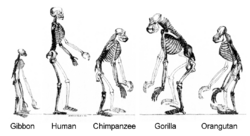| Display title | Biology:Gibbon–human last common ancestor |
| Default sort key | Gibbon-human last common ancestor |
| Page length (in bytes) | 6,978 |
| Namespace ID | 3026 |
| Namespace | Biology |
| Page ID | 846336 |
| Page content language | en - English |
| Page content model | wikitext |
| Indexing by robots | Allowed |
| Number of redirects to this page | 0 |
| Counted as a content page | Yes |
| Page image |  |
| HandWiki item ID | None |
| Edit | Allow all users (infinite) |
| Move | Allow all users (infinite) |
| Page creator | imported>NBrush |
| Date of page creation | 07:08, 29 June 2023 |
| Latest editor | imported>NBrush |
| Date of latest edit | 07:08, 29 June 2023 |
| Total number of edits | 1 |
| Recent number of edits (within past 90 days) | 0 |
| Recent number of distinct authors | 0 |
Description | Content |
Article description: (description)
This attribute controls the content of the description and og:description elements. | The phylogenetic split of the superfamily Hominoidea (apes) into the Hylobatidae (gibbons) and Hominidae (great apes) families (also dubbed "gibbon–human last common ancestor", GHLCA) is dated to the early Miocene, roughly 20 to 16 million years ago.
Hylobatidae has four gibbon genera (Hylobates... |
